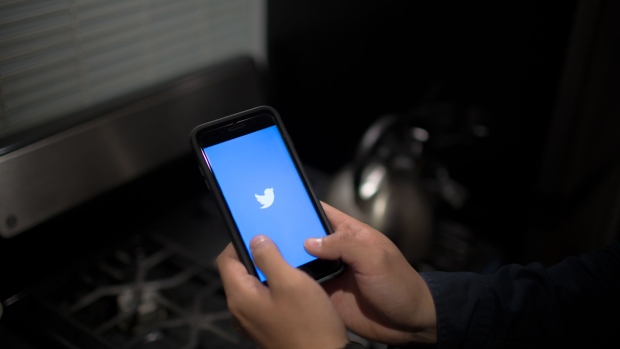May 28, 2020
Trump signs social media order amid questions over what it does
, Bloomberg News

President Donald Trump signed an executive order that he said would limit liability protections social-media companies enjoy after Twitter Inc. began selective fact checks of his posts on the platform.
Under current law, companies like Twitter and Facebook Inc. are protected for users’ posts. The companies “will not be able to keep their liability shield” under the order, Trump told reporters at the White House.
A White House spokesman said the president signed the order after reporters were escorted out of the Oval Office. The text of the order wasn’t immediately released.
Trump’s move comes after Twitter earlier this week labeled two of his posts about mail-in voting “potentially misleading” and provided links to news coverage of his comments. The president responded with outrage, accusing the social media company of censorship and election interference and threatening to possibly shut down the service.
“I’m signing an executive order to protect and uphold the free speech rights of the American people,” Trump said. “Currently, social media giants like Twitter receive an unprecedented liability shield based on the theory that they’re a neutral platform, which they’re not.”
If it were legal for him to shut down Twitter, Trump said, “I would do it.”
Attorney General William Barr, who joined Trump for his remarks, said the order would not repeal Section 230 of the 1996 Communications Decency Act, which provides social-media companies their liability protection.
“But it’s been stretched and I don’t know of anyone in Capitol Hill who doesn’t agree that it’s been stretched beyond its original intention,” he said. “I think this will help get back to the right balance.”
Earlier Thursday, Trump called out a single Twitter employee, head of site integrity Yoel Roth, Ton hursday in a tweet complaining that the platform’s decision to fact-check his tweets on voting by mail could “taint” the U.S. election.
White House officials complained that Twitter did not originally append fact checks to China Foreign Ministry Spokesman Lijan Zhao, who without evidence wrote that “it might be” the U.S. military that brought the coronavirus to China. Twitter has since added the fact-check link to his tweets.
Democrats, meanwhile, have largely applauded the effort to fact-check the president. But they questioned why Twitter didn’t similarly add links to recent tweets by the president that baselessly accused MSNBC host Joe Scarborough of murdering a former staffer who died while at work in one of his congressional offices nearly two decades ago.
“Yes we like Twitter to put up their fact check of the president, but it seems to be very selective,“ House Speaker Nancy Pelosi said Thursday.
The executive order is the latest in a years-long campaign by the president and his allies against social media companies. The companies say they have more aggressively sought to combat disinformation and foreign interference campaigns after the federal government found that Russia and other state actors used U.S. social media to influence the 2016 election.
Republicans have alleged that Twitter and Facebook are politically biased in the way they display posts and block certain material deemed offensive, and objected to Twitter’s decision to ban certain political advertising. Last May, the administration set up a website asking Americans to submit instances of alleged political bias on social media.
“We always knew that Silicon Valley would pull out all the stops to obstruct and interfere with President Trump getting his message through to voters,” Trump 2020 campaign manager Brad Parscale said in a statement. “Partnering with the biased fake news media ‘fact checkers’ is only a smoke screen Twitter is using to try to lend their obvious political tactics some false credibility.”
The president has complained about Twitter’s efforts to combat manipulative and abusive content by deleting fake profiles -- leading to a decline of hundreds of thousands of users in his follower count.
The websites have denied their actions are politically motivated, and Twitter Chief Executive Officer Jack Dorsey said then he also lost around 200,000 followers in the purge. In 2018 congressional testimony, Dorsey said there were technical explanations for cases of alleged bias raised by Republican lawmakers.
Still, the debate has exposed a rift among Silicon Valley tech giants, with Facebook CEO Mark Zuckerberg criticizing Twitter’s decision in an interview with Fox News.
“I just believe strongly that Facebook shouldn’t be the arbiter of truth of everything that people say online,” he said. “Private companies probably shouldn’t be, especially these platform companies, shouldn’t be in the position of doing that.“
Dorsey fired back in a tweet posted Wednesday night, saying the fact-check was designed to make sure people didn’t misunderstand the president’s tweet and believe they didn’t need to register to vote in order to receive an absentee ballot.






